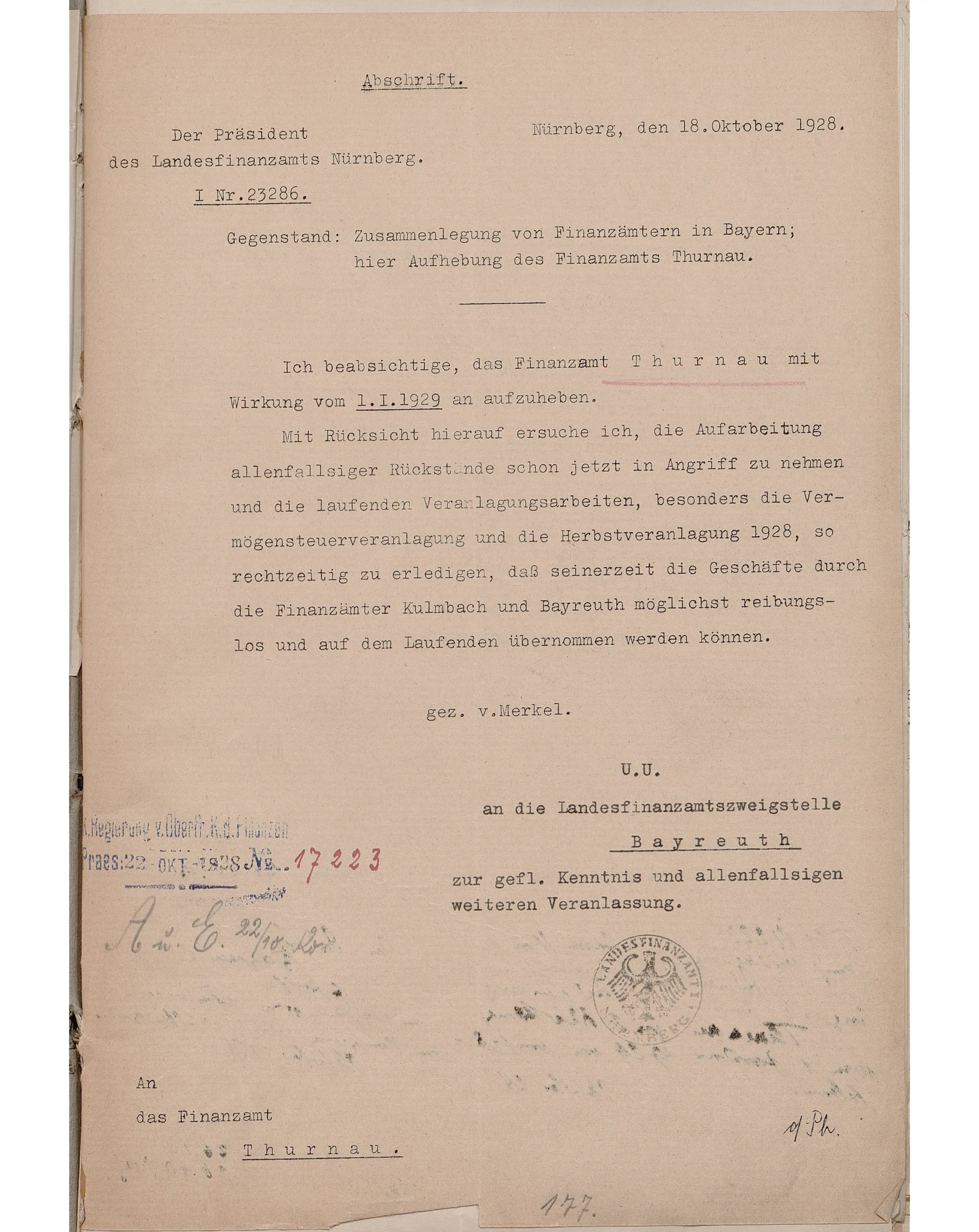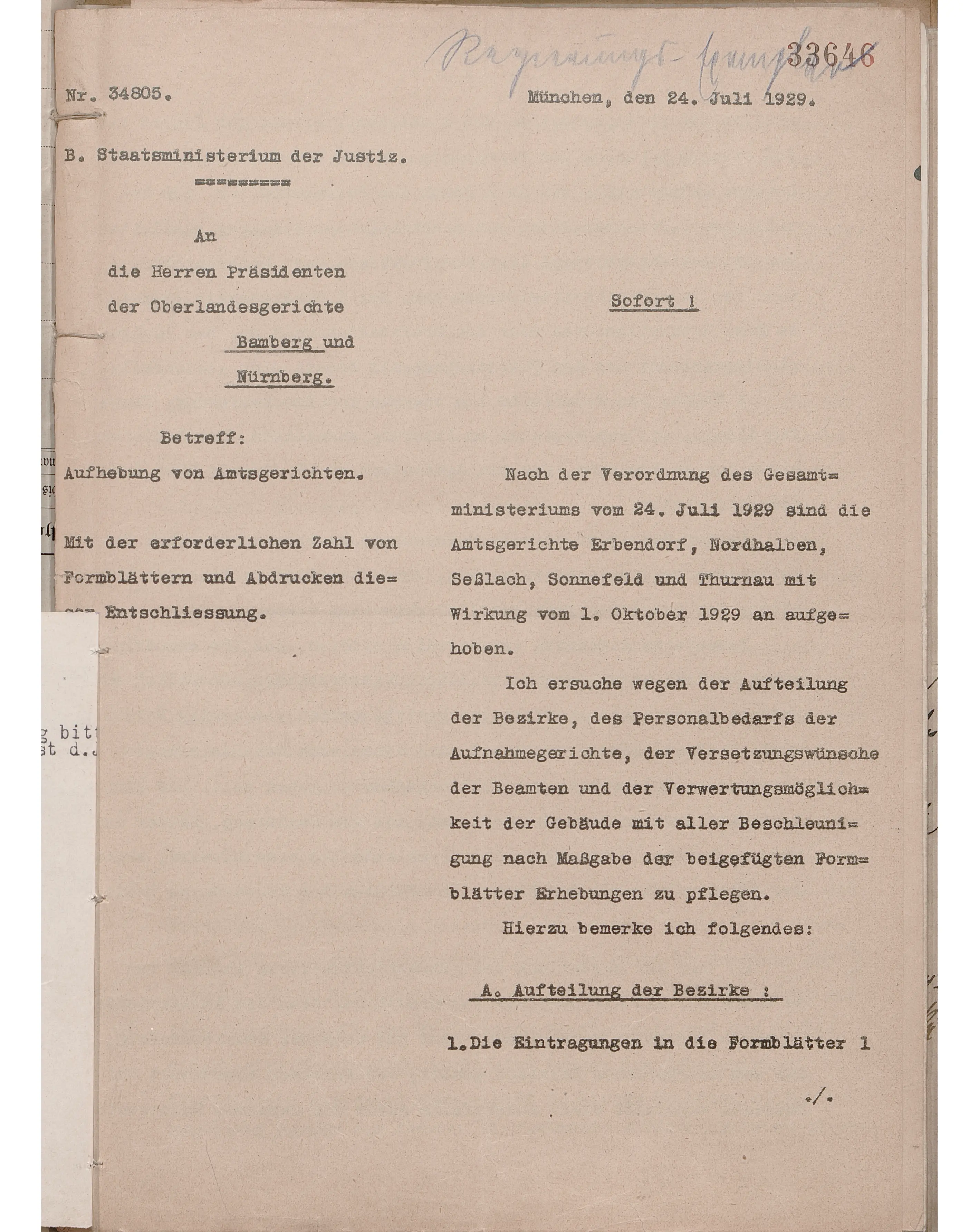Provincialisation in the German Empire
Efforts to industrialize and First World War Losses
Thurnau's transition into the 20th century was marked by efforts to establish industry. In the economically prosperous Franconia, Thurnau was somewhat lagging. The business location Thurnau was dependent on income from passenger traffic, which were bound to the tax office and the district court and kept the 16 inns (as of 1904) alive.
The loss of young men killed in the war First World War, further added to the economic and socio-political difficulties.
1929: Loss of the tax office and the district court
The loss of the tax office on 1 January 1929 and the district court six months later represents an important break in Thurnau's history. After the industrialisation efforts in the preceding decades remained largely unsuccessful, the visitors that went there because of the institutions were one of the most important sources of income. Additionally shaken by the inflation years 1922/23 and a flood disaster (9 July 1927), Thurnau found itself in an increasing economic decline after World War I and the "Golden Twenties" were known to the Thurnau population only through stories.

References
Literature:
Vom Residenzort zur Landgemeinde. Ersch. in: Markt Thurnau (Hrsg.): Thurnau 1239-1989. Bayreuth, 1989. S.17-38.
Zwei Kriege dazwischen wenig. Ersch. in: Markt Thurnau (Hrsg.): Thurnau 1239-1989. Bayreuth, 1989. S.52-65.
Kampflose Übergabe des Marktes Thurnau an die Amerikaner. Ersch. in: Markt Thurnau (Hrsg.): Thurnau 1239-1989. Bayreuth, 1989. S.66-70.
Sources:
Verordnung von 1929 “Aufhebung Finanzamt” aus dem Staatsarchiv Bamberg (Signatur: StaBa, K3 FI Nr. 433)
Zeitungsartikel aus dem Bamberger Tagblatt vom 02.09.1929 zum „Verlust des Amtsgerichts“ aus dem Staatsarchiv Bamberg (Signatur: StaBa, K3 FI Nr.433)
Verordnung von 1928 zur „Zusammenlegung Finanzämter“ aus dem Staatsarchiv Bamberg (Sigantur: StaBa, Landesfinanzamt Nürnberg, Zweigstelle Nr. 1155)
Authors: Robin Jacob, Karla Pfitzinger
